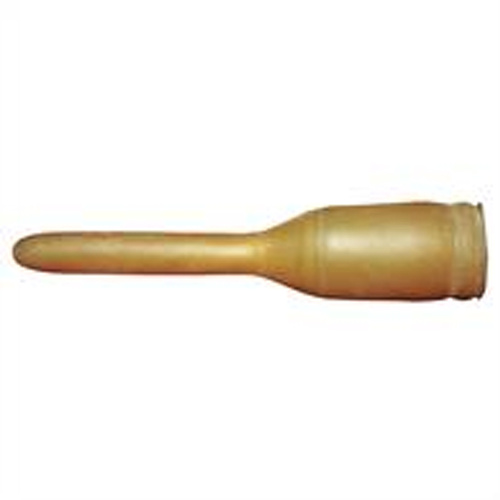Wombaroo Feeding Teats are made from natural latex. Most teats have a sleeve to fit bottles with a neck diameter of 18-24mm (except for Teat D - 26mm).
Teat C - suits cats, rabbits and carnivorous marsupials
Teat D - suits deer, large dogs, newborn lambs, cria and piglets
Teat F - suits flying foxes (fruit bats) and some dog breeds
Teat LD - suits large dogs, large possums, pouch-bound wombats and pouch-bound koalas
Teat P - suits small mammals, cats, rabbits and guinea pigs
Teat SD - suits small dogs, possums and gliders
The 120mL plastic feeding bottle fits Wombaroo teats and has graduations in mL (millilitres).
Teat Selection
The teat should resemble the mother's in size and shape to ensure mouth comfort, fit and correct tooth eruption.
Hole Size
There is no hole in the teats, so you will need to make a hole to suit the animal being fed. Pierce the tip of the teat with a hot needle to make a hole about 1mm in diameter, or for large animals, cut a hole with scissors. If the hole is too small, excessive sucking will quickly weaken the tip and the end will blow out. If this is happening then the hole is probably too small for the animal; make a larger hole. The hole should be large enough for milk to drip out slowly when the bottle is inverted.
Feeding Technique
Small animals can be fed using a syringe with a teat pulled over the end, to give greater control of milk flow with the plunger. Guidance should be obtained from your veterinarian on correct feeding technique for different animals.
Care and Storage
Latex is a natural product. Deterioration can be slowed by storing teats in a dry place away from light. An opaque, airtight container should be used. Immediately after use, teats should be washed in warm soapy water, dried and stored as above. Some carers sterilise by boiling or with infant sterilising solutions.
Be The First To Review This Product!
Help other Pet Station users shop smarter by writing reviews for products you have purchased.








